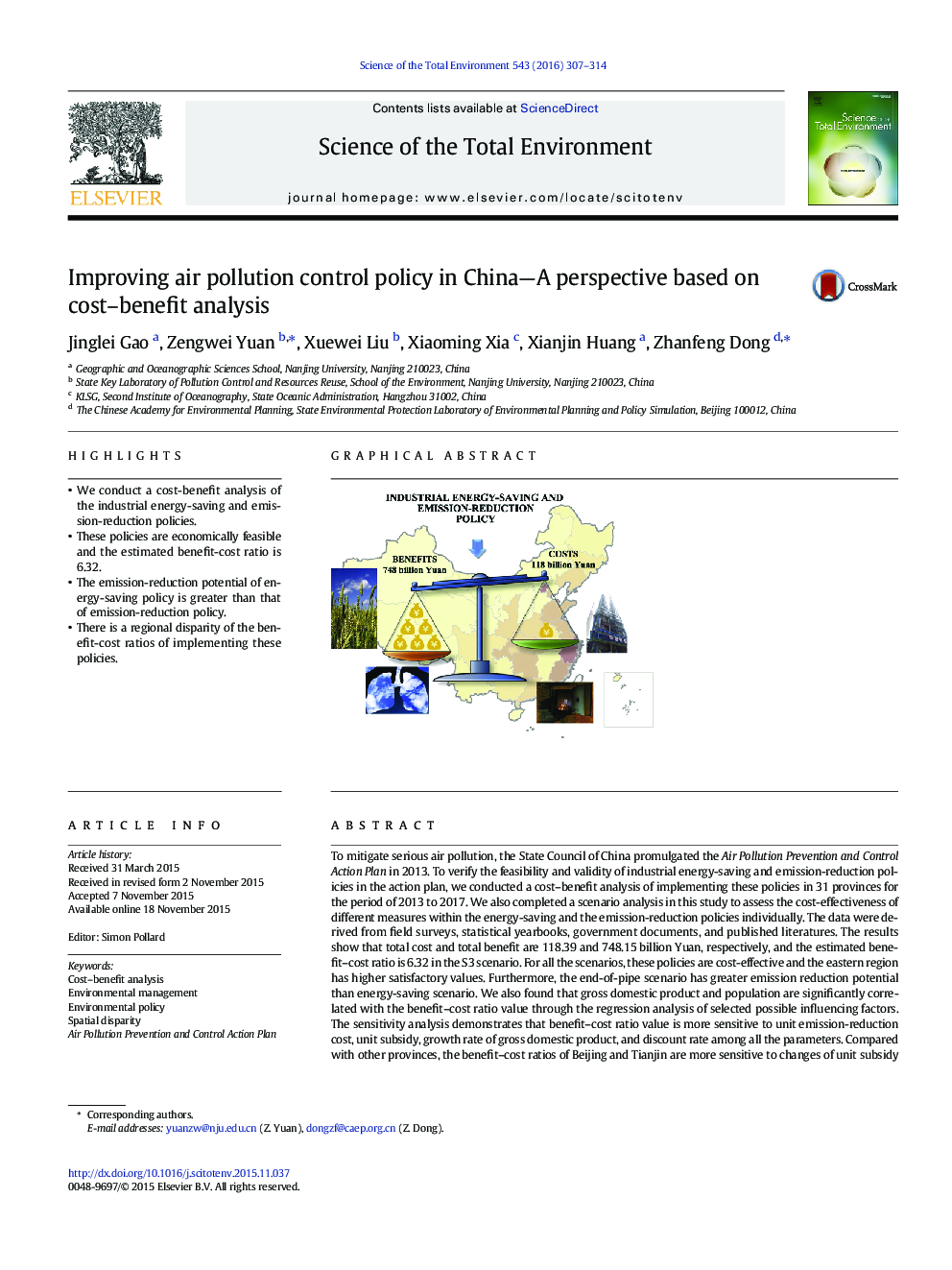| کد مقاله | کد نشریه | سال انتشار | مقاله انگلیسی | نسخه تمام متن |
|---|---|---|---|---|
| 6324372 | 1619740 | 2016 | 8 صفحه PDF | دانلود رایگان |
- We conduct a cost-benefit analysis of the industrial energy-saving and emission-reduction policies.
- These policies are economically feasible and the estimated benefit-cost ratio is 6.32.
- The emission-reduction potential of energy-saving policy is greater than that of emission-reduction policy.
- There is a regional disparity of the benefit-cost ratios of implementing these policies.
To mitigate serious air pollution, the State Council of China promulgated the Air Pollution Prevention and Control Action Plan in 2013. To verify the feasibility and validity of industrial energy-saving and emission-reduction policies in the action plan, we conducted a cost-benefit analysis of implementing these policies in 31 provinces for the period of 2013 to 2017. We also completed a scenario analysis in this study to assess the cost-effectiveness of different measures within the energy-saving and the emission-reduction policies individually. The data were derived from field surveys, statistical yearbooks, government documents, and published literatures. The results show that total cost and total benefit are 118.39 and 748.15 billion Yuan, respectively, and the estimated benefit-cost ratio is 6.32 in the S3 scenario. For all the scenarios, these policies are cost-effective and the eastern region has higher satisfactory values. Furthermore, the end-of-pipe scenario has greater emission reduction potential than energy-saving scenario. We also found that gross domestic product and population are significantly correlated with the benefit-cost ratio value through the regression analysis of selected possible influencing factors. The sensitivity analysis demonstrates that benefit-cost ratio value is more sensitive to unit emission-reduction cost, unit subsidy, growth rate of gross domestic product, and discount rate among all the parameters. Compared with other provinces, the benefit-cost ratios of Beijing and Tianjin are more sensitive to changes of unit subsidy than unit emission-reduction cost. These findings may have significant implications for improving China's air pollution prevention policy.
234
Journal: Science of The Total Environment - Volume 543, Part A, 1 February 2016, Pages 307-314
